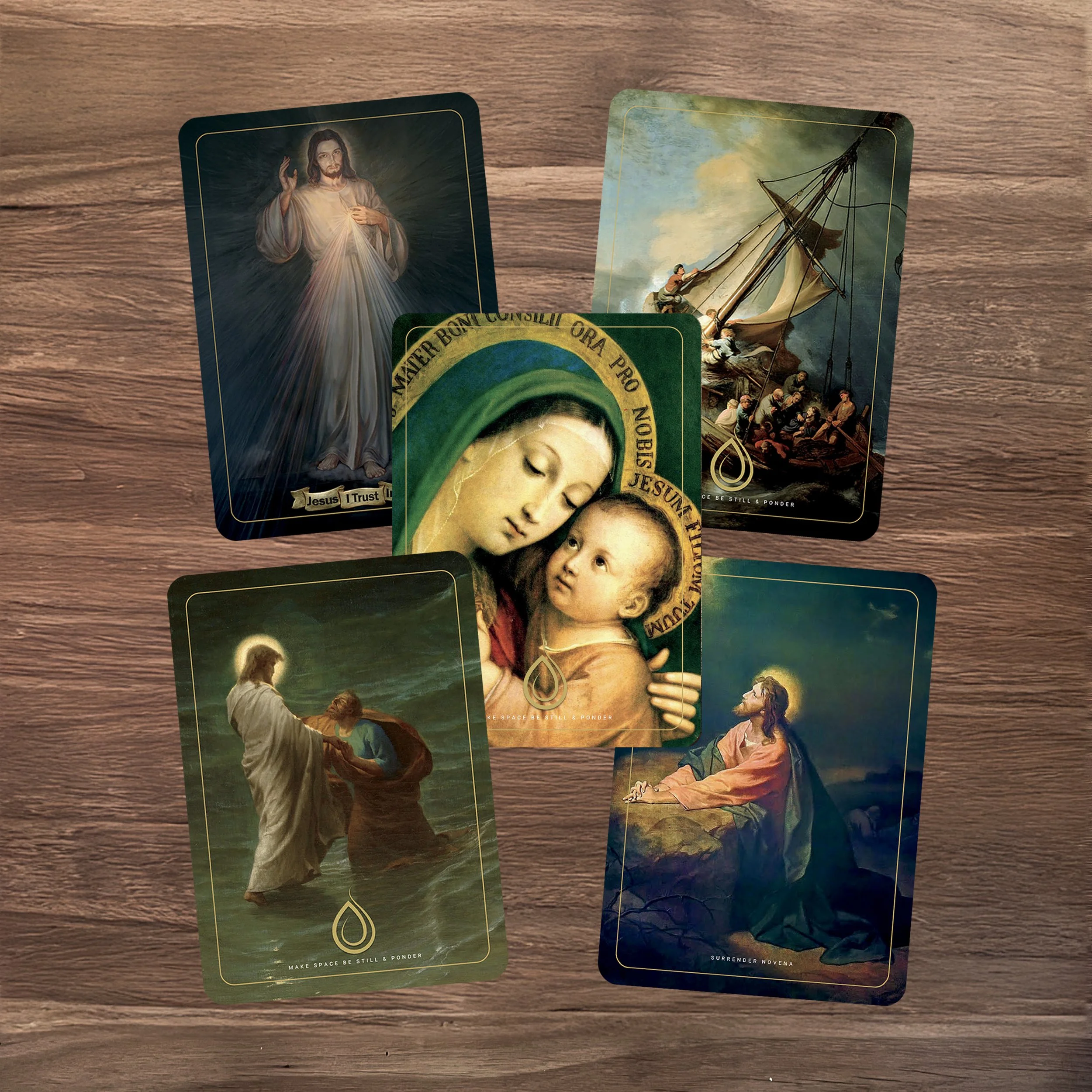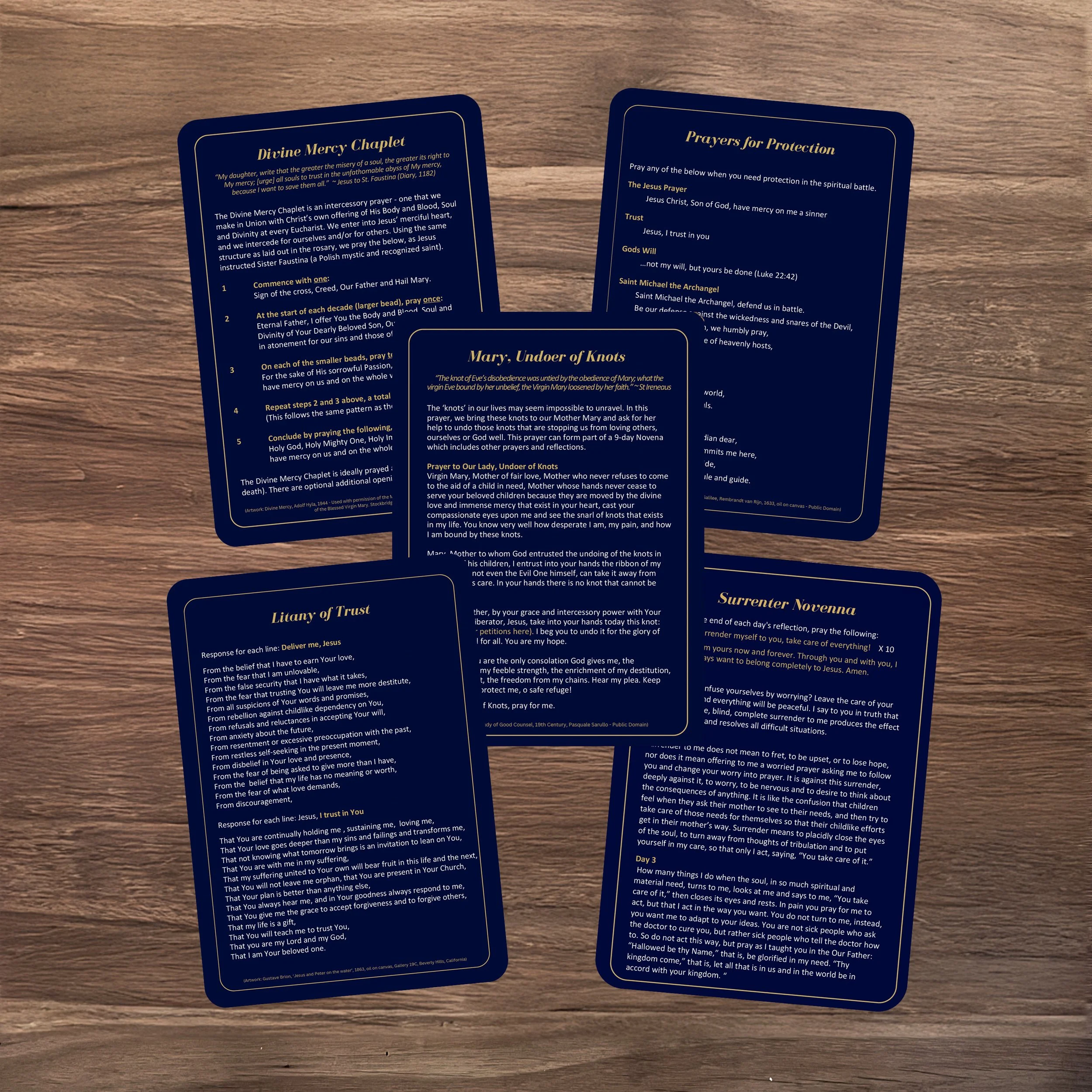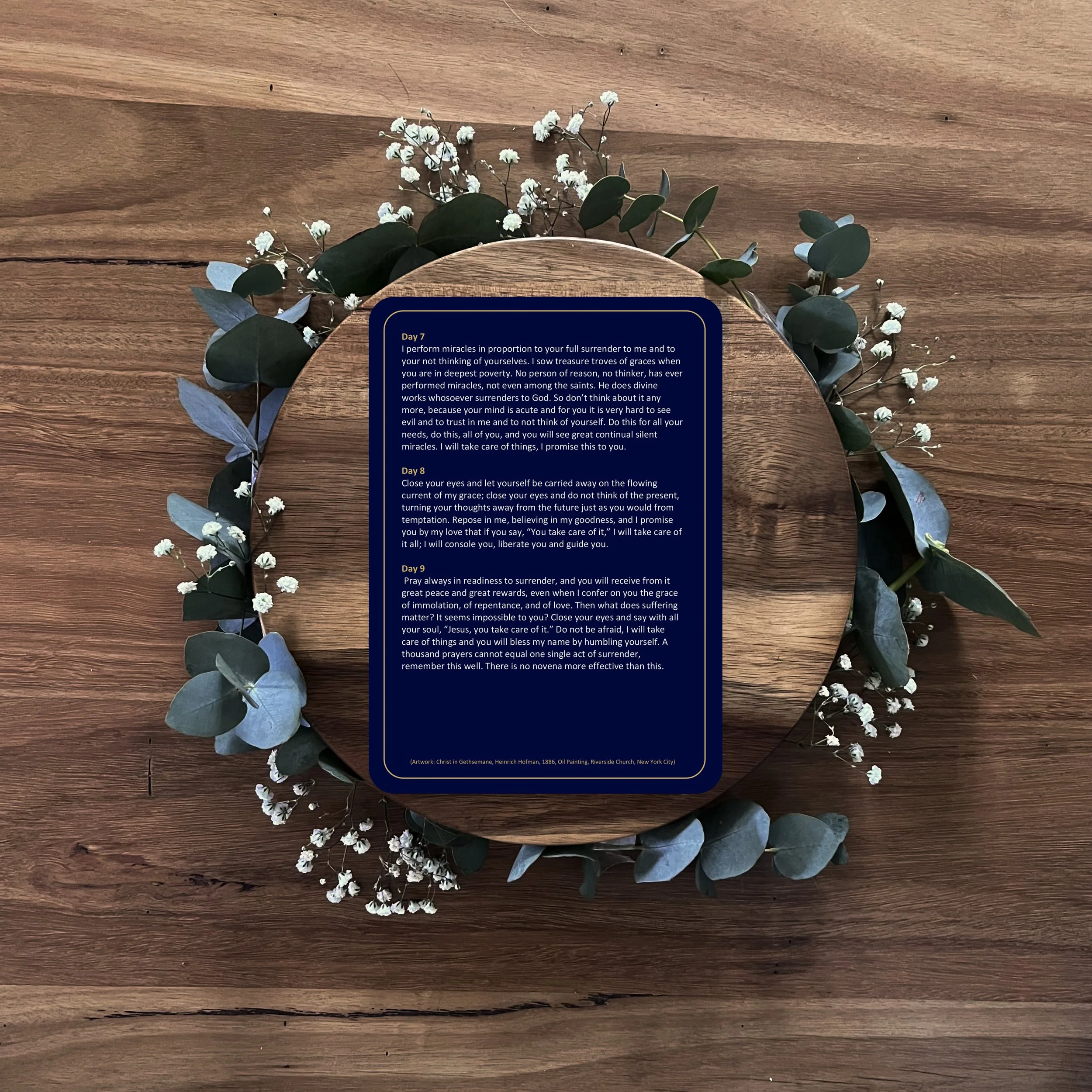About the prayers & selected artwork:
Litany of Trust
A litany is a series of petitions. The Litany of Trust begins naming fears, anxieties, and doubts that hinder us from fully entrusting ourselves to Jesus. In the second part of the litany, we affirm our trust in Him, relying on the Holy Spirit for the grace to surrender wholeheartedly.
Artwork: Gustave Brion, ‘Jesus and Peter on the water’, 1863, oil on canvas, Gallery 19C, Beverly Hills, California. This Artwork was selected as the biblical story highlights that all we need do is keep our eyes on Jesus, trusting in His love and mercy.
Surrender Novena
A novena is a series of prayers over a nine day period, asking for specific graces. The Surrender Novena originates from Fr. Dolindo Ruotolo (1882-1970), a Servant of God and candidate for beatification. The words of this novena were revealed to Fr. Dolindo by Jesus. Despite facing personal suffering, including living with paralysis for the final decade of his life, Fr. Dolindo remained a devoted servant of Christ. He also had a close friendship with Padre Pio, who, like him, experienced deep spiritual union with Christ through his suffering.
Fr. Dolindo and Padre Pio both left behind teachings and prayers that encourage us to surrender to Christ. Their example calls us to live with mercy and love, reflecting the way they embraced Christ’s love in their own lives.
Artwork: Henrich Hofman, Christ in Gethsemene, 1886, Oil Painting, Riverside Church, New York City. This Artwork was selected as it reminds us of Jesus’ profound trust and surrender to our Fathers will. “Let this cup pass from me, but not my will, but thine be done” (Matthew 26:39).
Prayers for Protection
A Catholic priest and exorcist recommended the below series of prayers:
The Jesus Prayer: A short prayer that you can repeat at any time of day, remembering and seeking God’s mercy.
Trust and God’s Will: Directly from the gospel of Luke (22:42)
Saint Michael the Archangel: Guides us in asking the Archangel Michael to protect us in the battles of life, whether physical, spiritual, or emotional.
Guardian angel: “Call upon Guardian Angel to protect you from temptation and evil throughout your day.”
Artwork: Christ in the Storm on the Sea of Galilee, 1633, oil-on-canvas, Rembrandt van Rijn, Unknown location. Selected as it reminds us that even though the storm may be brewing, Jesus is right in the boat with us - we are under His Protection. Despite the chaos surrounding us, Jesus is peacefully sleeping- we too should be at peace with full trust in Gods divine providence.
Novena to our Lady, undoer of Knots
The "Our Lady Undoer of Knots" prayer asks for Mary's intercession in untangling the spiritual, emotional, and personal struggles that bind us, seeking her help to bring peace and resolution to our lives.
The "Our Lady Undoer of Knots" prayer originated in Germany in the 1700s. The devotion is centered around an image of the Virgin Mary, depicted as undoing knots in a ribbon, symbolizing the resolution of life's difficulties. The prayer became widely known after being popularized by Pope Francis, who had a deep devotion to this image of Mary and promoted it globally.
Artwork: Our Lady of Good Counsel, 19th Century, Pasquale Sarullo. This artwork was selected to remind us of Our Mothers tenderly love for us.
Artwork Artists Edition: Virgen untier of Galicia, Oscar Casares, 2015, Spain, Santuario de O Corpiño (printed with permission of the artist and Rector of the Sanctuary). This is a beautiful, modernized depiction of Our Lady Undoer of Knots - we can reflect how our Heavenly Mother unties the knots in the ribbon of our lives.
Divine Mercy Chaplet
The Divine Mercy Chaplet is a prayer dedicated to God's infinite mercy. It seeks forgiveness for sins, healing, and peace, focusing on the Passion of Christ and His boundless love. The prayer format is similar to that of the rosary.
The Chaplet was revealed to Saint Faustina Kowalska, a Polish nun, in the 1930s. Jesus appeared to her, instructing her to pray the Chaplet using specific prayers. He emphasized God's mercy and encouraged her to spread the devotion to the world. Saint Faustina recorded these messages in her diary, and the Chaplet became a prominent prayer for seeking mercy, particularly for those in need of healing or forgiveness. The Chaplet was later promoted by Pope John Paul II, who canonized Saint Faustina in 2000.
Artwork: Divine Mercy, Adolf Hyla, 1944 - Used with permission of the Marian Fathers of the Immaculate Conception of the Blessed Virgin Mary. Stockbridge, MA USA. Artwork selected as a traditional representation of the image that Saint Faustina was asked by Jesus to have commissioned. This version is also replicated in the Divine Mercy Shrine in Keysborough, Victoria, Australia.
This painting itself is a channel of grace. According to Saint Fautinas’s diary, Jesus instructed her to:
“Paint an image according to the pattern you see, with the signature: Jesus, I trust in You. I promise that the soul that will venerate this image will not perish. I also promise victory over [its] enemies already here on earth, especially at the hour of death. I Myself will defend it as My own glory (Diary, 47, 48). I am offering people a vessel with which they are to keep coming for graces to the fountain of mercy. That vessel is this image with the signature: Jesus, I trust in You (327). I desire that this image be venerated, first in your chapel, and [then] throughout the world (47).” - Extract from DM website.













